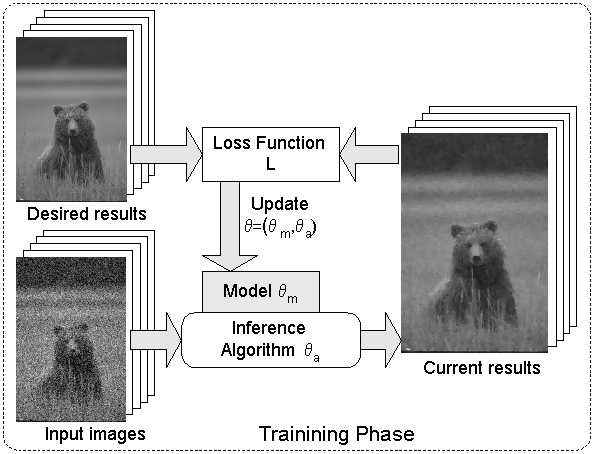Active Random Fields
Adrian Barbu

Many computer vision problems can be formulated in a Bayesian framework based on Markov Random Fields (MRF) or Conditional Random Fields (CRF).
Generally, the MRF/CRF model is learned independently of the inference algorithm that is used to obtain the final result.
In this work, we observe considerable gains in speed and accuracy by training the MRF/CRF model together with a fast and suboptimal inference algorithm.
An Active Random Field (ARF) is defined as a combination of a MRF/CRF based model and a fast inference algorithm for the MRF/CRF model. This combination is trained through an optimization of a loss function and a training set consisting of pairs of input images and desired outputs, as shown in the figure.
We apply the Active Random Field concept to image denoising, using the Fields of Experts MRF together with a 1-4 iteration gradient descent algorithm for inference. Experimental validation on unseen data shows that the Active Random Field approach obtains an improved benchmark performance as well as a 1000-3000 times speedup compared to the Fields of Experts MRF. Using the ARF approach, image denoising can be performed in real-time, at 8fps on a single CPU for a 256x256 image sequence, with close to state-of-the-art accuracy.
More details in the slides (ppt).
Publications:
A. Barbu. Learning Real-Time MRF Inference for Image Denoising. CVPR 2009 (pdf)
A. Barbu. Training an Active Random Field for Real-Time Image Denoising. IEEE Trans. Image Processing, 18, November 2009. (pdf)
Matlab Demo: (zip), C++ training code (zip), Berkeley images
home research